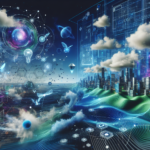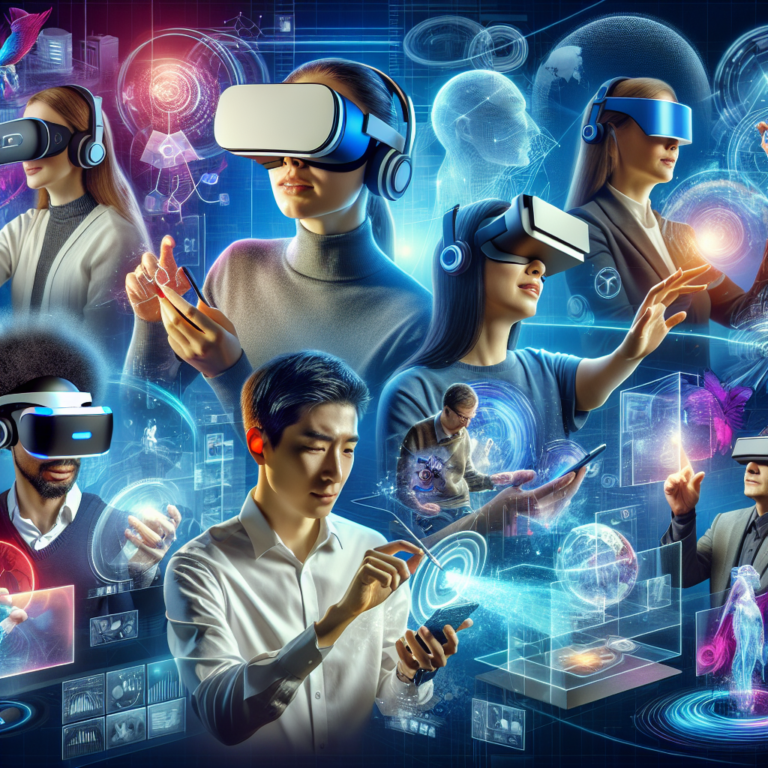Revolutionizing User Interfaces: The Impact of Immersive Technologies 🌐
Understanding Immersive Technologies
In the rapidly evolving world of tech, immersive technologies such as Virtual Reality (VR), Augmented Reality (AR), and Mixed Reality (MR) are no longer just buzzwords. These technologies are fundamentally reshaping the landscape of user interface (UI) design. With advancements in hardware and software, designers are now able to create experiences that fully engage users in ways previously thought impossible. Let’s dive deeper into what immersive technologies are and how they are influencing the future of UI design.
The Transformation of User Experience
Today’s tech-savvy users expect more than just simple 2D interfaces. They crave interactive and engaging experiences that allow them to connect on a deeper level with digital content. Immersive technologies enable designers to craft intuitive and versatile interfaces that transform how we interact with information. Here are some ways immersive technologies are changing the user experience:
- Enhanced Engagement: Immersive experiences capture the user’s attention more effectively than traditional interfaces.
- Intuitive Interactions: Natural gestures, voice commands, and spatial awareness allow for seamless engagement without the need for complex controls.
- Personalized Environments: Users can immerse themselves in custom-built virtual worlds tailored to their interests and preferences.
- Realistic Simulations: VR can simulate real-world scenarios for training purposes, leading to improved learning experiences.
Key Features of Immersive UI Design
As designers look to harness the power of immersive technologies, several key features differentiate immersive UI from traditional UI:
Spatial Design
Spatial design is one of the defining features of immersive interfaces. Unlike 2D interfaces confined to screens, immersive UIs utilize a 3D space, allowing users to interact with elements around them. This can include:
- Depth and Scale: Objects can appear larger or smaller depending on their distance, which creates a sense of realism.
- Interaction from Multiple Angles: Users can approach and interact with elements from various angles, making the experience more natural.
Natural User Interfaces (NUIs)
NUIs leverage human gestures and voice to create more intuitive interactions. By using hand motions, eye-tracking, or voice commands, users can engage with technology in a way that feels instinctive.
- Gesture Control: Users can manipulate objects in a virtual space using simple hand movements.
- Voice Activation: AI-powered voice recognition allows users to perform tasks just by speaking commands.
Immersive Technologies in Action
Many industries are already embracing immersive technologies to enhance their UI design. Here are a few examples:
Gaming
The gaming industry has been at the forefront of immersive UI design. Games that utilize VR and AR technologies provide players with an unparalleled level of immersion, allowing them to step into new worlds and interact like never before.
Healthcare
In healthcare, immersive simulations are used for training medical professionals. Through VR, doctors can practice surgeries and learn about anatomy in a pressure-free environment, ultimately enhancing their skills and improving patient outcomes.
Retail and E-commerce
In retail, AR applications allow customers to visualize products in their own environment before making a purchase. This feature enhances the shopping experience and increases the likelihood of conversion.
The Future of UI Design with Immersive Technologies
As we look ahead, the integration of immersive technologies into UI design promises to elevate user experiences to new heights. Here are a few exciting trends to watch out for:
Integration of AI
The convergence of AI and immersive technologies will herald a new era of personalized experiences. Imagine UIs that adapt to your preferences and behaviors, learning and evolving as you interact with them.
Social Spaces in Virtual Environments
Social interaction in immersive spaces is becoming increasingly popular. Virtual meetings, social gatherings, and collaborative workspaces will redefine how we connect, making interfaces more social and interactive.
New Aesthetic Paradigms
Immersive UI design is also leading to new aesthetic trends. Designers will need to rethink color, form, and space to create visually appealing and functional 3D environments that resonate with users.
Challenges in Immersive UI Design
Despite the exciting advancements, designing immersive UIs comes with its challenges:
- Technological Limitations: Not all users have access to high-end VR/AR devices, limiting audience reach.
- Learning Curve: Users may face difficulties adapting to new interface paradigms, necessitating user-friendly design principles.
- Safety Concerns: Prolonged use of VR can lead to physical discomfort or safety issues in the physical environment.
Final Thoughts on Immersive Technologies and UI Design
The future of user interface design is undoubtedly immersive. As technology continues to evolve, so will the opportunities to create unique and engaging user experiences. Designers must stay ahead of the curve to capitalize on these trends and sculpt interfaces that resonate with and delight users. With immersive technologies paving the way, the possibilities for UI design are limitless! 🚀




0 Comments